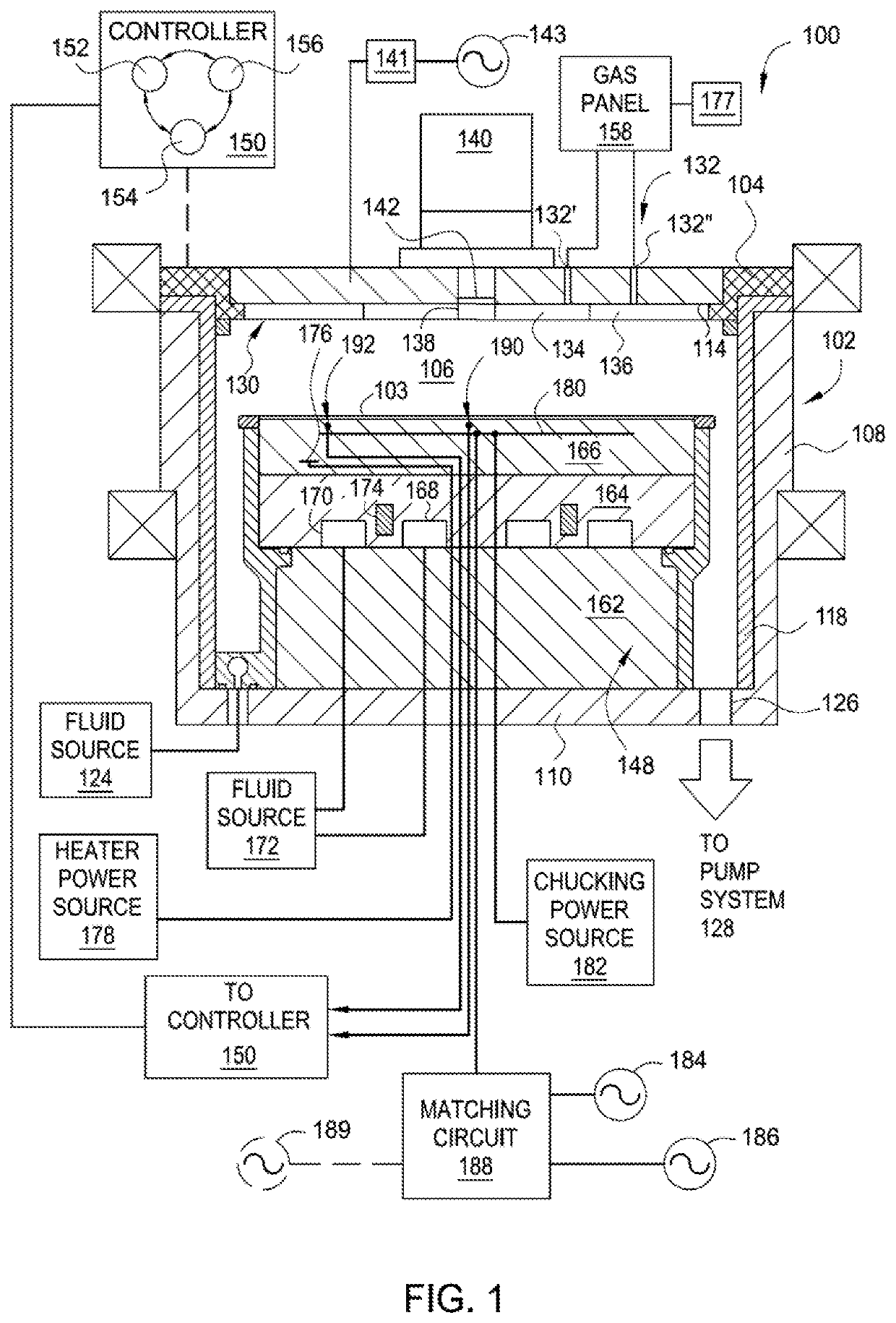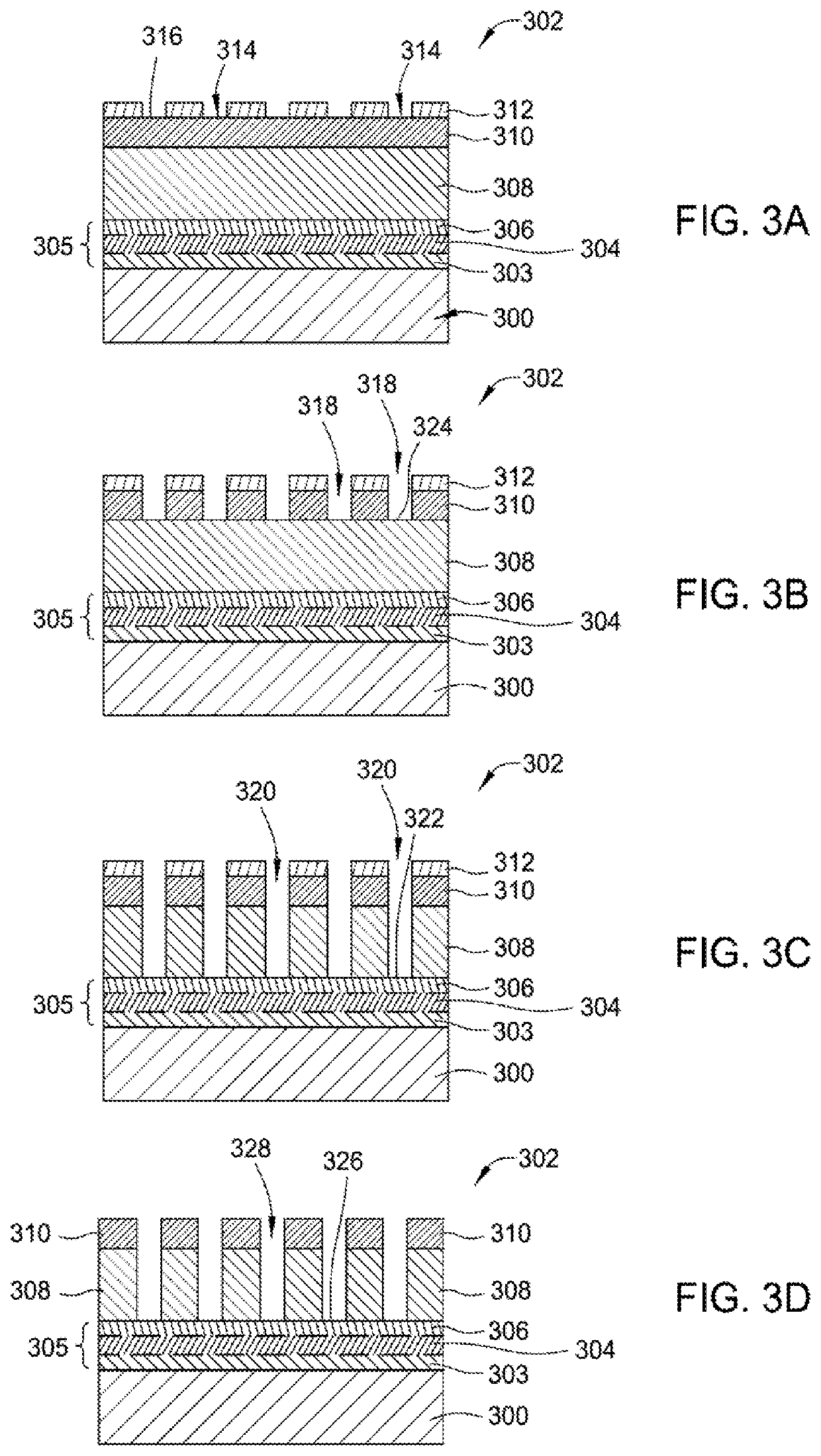Film stack for lithography applications
a technology for lithography and film stacks, applied in the direction of basic electric elements, electrical equipment, semiconductor/solid-state device manufacturing, etc., to achieve the effect of facilitating profile and dimension control of features
- Summary
- Abstract
- Description
- Claims
- Application Information
AI Technical Summary
Benefits of technology
Problems solved by technology
Method used
Image
Examples
Embodiment Construction
[0019]Embodiments for the present application includes methods for forming a film stack and an etching process to etch such film stack to form features having desired aspect ratios and profiles in the film stack. The film stack includes a hardmask layer having a metal-containing material in the film stack. The hardmask layer may be a single layer or multiple layers with selected film properties to assist etching resistance and enhance lithography exposure performance as needed. In one or more embodiments, the hardmask layer is a metal-containing material with desired absorption coefficient or mixture of different values of absorption coefficient so as to assist the exposure and developing accuracy during the lithography exposure process. An etching process with desired chemistry is also selected to pattern the film stack, particularly to etch the hardmask layer.
[0020]FIG. 1 is a sectional view of one example of a processing chamber 100 suitable for performing a patterning process to...
PUM
| Property | Measurement | Unit |
|---|---|---|
| atomic number | aaaaa | aaaaa |
| operating pressures | aaaaa | aaaaa |
| frequency | aaaaa | aaaaa |
Abstract
Description
Claims
Application Information
 Login to View More
Login to View More - R&D
- Intellectual Property
- Life Sciences
- Materials
- Tech Scout
- Unparalleled Data Quality
- Higher Quality Content
- 60% Fewer Hallucinations
Browse by: Latest US Patents, China's latest patents, Technical Efficacy Thesaurus, Application Domain, Technology Topic, Popular Technical Reports.
© 2025 PatSnap. All rights reserved.Legal|Privacy policy|Modern Slavery Act Transparency Statement|Sitemap|About US| Contact US: help@patsnap.com



